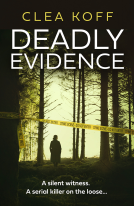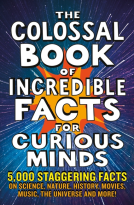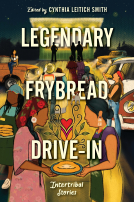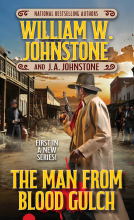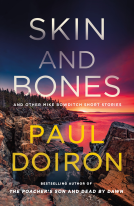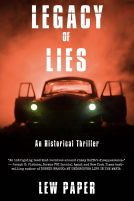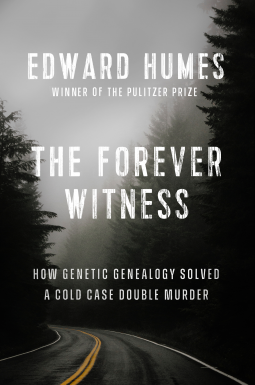
The Forever Witness
How DNA and Genealogy Solved a Cold Case Double Murder
by Edward Humes
This title was previously available on NetGalley and is now archived.
Buy on Amazon
Buy on BN.com
Buy on Bookshop.org
*This page contains affiliate links, so we may earn a small commission when you make a purchase through links on our site at no additional cost to you.
Send NetGalley books directly to your Kindle or Kindle app
1
To read on a Kindle or Kindle app, please add kindle@netgalley.com as an approved email address to receive files in your Amazon account. Click here for step-by-step instructions.
2
Also find your Kindle email address within your Amazon account, and enter it here.
Pub Date Nov 29 2022 | Archive Date Dec 29 2022
PENGUIN GROUP Dutton | Dutton
Talking about this book? Use #TheForeverWitness #NetGalley. More hashtag tips!
Description
“Thought-provoking true-crime thriller…the book raises urgent questions of balancing public and private good that we’ll likely be dealing with as long as the title implies.”—Wall Street Journal
A relentless detective and a civilian genealogist solve a haunting cold case—and launch a crime-fighting revolution that tests the fragile line between justice and privacy.
In November 1987, a young couple from the idyllic suburbs of Vancouver Island on an overnight trip to Seattle vanished without a trace. A week later, the bodies of Tanya Van Cuylenborg and her boyfriend Jay Cook were found in rural Washington. It was a brutal crime, and it was the perfect crime: With few clues and no witnesses in the vast and foreboding Olympic Peninsula, an international manhunt turned up empty, and the sensational case that shocked the Pacific Northwest gradually slipped from the headlines.
In deep-freeze, long-term storage, biological evidence from the crime sat waiting, as Detective Jim Scharf poured over old case files looking for clues his predecessors missed. Meanwhile, 1,200 miles away in California, CeCe Moore began her lifelong fascination with genetic genealogy, a powerful forensic tool that emerged not from the crime lab, but through the wildly popular home DNA ancestry tests purchased by more than 40 million Americans. When Scharf decided to send the cold case’s decades-old DNA to Parabon NanoLabs, he hoped he would finally bring closure to the Van Cuylenborg and Cook families. He didn’t know that he and Moore would make history.
Genetic genealogy, long the province of family tree hobbyists and adoptees seeking their birth families, has made headlines as a cold case solution machine, capable of exposing the darkest secrets of seemingly upstanding citizens. In the hands of a tenacious detective like Scharf, genetic genealogy has solved one baffling killing after another. But as this crime-fighting technique spreads, its sheer power has sparked a national debate: Can we use DNA to catch the murderers among us, yet still protect our last shred of privacy in the digital age—the right to the very blueprint of who we are?
A relentless detective and a civilian genealogist solve a haunting cold case—and launch a crime-fighting revolution that tests the fragile line between justice and privacy.
In November 1987, a young couple from the idyllic suburbs of Vancouver Island on an overnight trip to Seattle vanished without a trace. A week later, the bodies of Tanya Van Cuylenborg and her boyfriend Jay Cook were found in rural Washington. It was a brutal crime, and it was the perfect crime: With few clues and no witnesses in the vast and foreboding Olympic Peninsula, an international manhunt turned up empty, and the sensational case that shocked the Pacific Northwest gradually slipped from the headlines.
In deep-freeze, long-term storage, biological evidence from the crime sat waiting, as Detective Jim Scharf poured over old case files looking for clues his predecessors missed. Meanwhile, 1,200 miles away in California, CeCe Moore began her lifelong fascination with genetic genealogy, a powerful forensic tool that emerged not from the crime lab, but through the wildly popular home DNA ancestry tests purchased by more than 40 million Americans. When Scharf decided to send the cold case’s decades-old DNA to Parabon NanoLabs, he hoped he would finally bring closure to the Van Cuylenborg and Cook families. He didn’t know that he and Moore would make history.
Genetic genealogy, long the province of family tree hobbyists and adoptees seeking their birth families, has made headlines as a cold case solution machine, capable of exposing the darkest secrets of seemingly upstanding citizens. In the hands of a tenacious detective like Scharf, genetic genealogy has solved one baffling killing after another. But as this crime-fighting technique spreads, its sheer power has sparked a national debate: Can we use DNA to catch the murderers among us, yet still protect our last shred of privacy in the digital age—the right to the very blueprint of who we are?
Available Editions
| EDITION | Other Format |
| ISBN | 9781524746278 |
| PRICE | $28.00 (USD) |
Readers who liked this book also liked:
The Colossal Book of Incredible Facts for Curious Minds
Nigel Henbest; Simon Brew; Sarah Tomley; Ken Okona-Mensah; Tom Parfitt; Trevor Davies; Chas Newkey-Burden
Entertainment & Pop Culture, Humor & Satire, Nonfiction (Adult)
Nigel Henbest; Simon Brew; Sarah Tomley; Ken Okona-Mensah; Tom Parfitt; Trevor Davies; Chas Newkey-Burden
Entertainment & Pop Culture, Humor & Satire, Nonfiction (Adult)
Legendary Frybread Drive-In
Cynthia Leitich Smith; Kate Hart; Eric Gansworth; Marcella Bell; Darcie Little Badger; Karina Iceberg; Kaua Mahoe Adams; Andrea L. Rogers; Cheryl Isaacs; Christine Hartman Derr; Brian Young; K. A. Cobell; Jen Ferguson; A. J. Eversole; Byron Graves; Angeline Boulley; David A. Robertson
Children's Fiction, Multicultural Interest, Teens & YA
Cynthia Leitich Smith; Kate Hart; Eric Gansworth; Marcella Bell; Darcie Little Badger; Karina Iceberg; Kaua Mahoe Adams; Andrea L. Rogers; Cheryl Isaacs; Christine Hartman Derr; Brian Young; K. A. Cobell; Jen Ferguson; A. J. Eversole; Byron Graves; Angeline Boulley; David A. Robertson
Children's Fiction, Multicultural Interest, Teens & YA
Everybody Has a Gun
William W. Johnstone; J.A. Johnstone
General Fiction (Adult), Historical Fiction
William W. Johnstone; J.A. Johnstone
General Fiction (Adult), Historical Fiction
